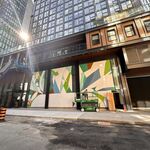I don't personally see this as a selling point at the frequencies at which GO electrification is proposed to run initially (15 minutes). Maybe if we were talking about reaching the 6-10 minute frequencies that have been discussed, but this comes with its own set of issues. I can't imagine 6-10 minute frequencies running out to Barrie, Kitchener, or London. Will there be sufficient capacities on the single deck EMU trains to accommodate inner city passengers as well as long distance travellers? It's important to keep in mind that a lot of these ideas are not yet funded, and given the volatile nature of Toronto transit planning I'm not sure it would be wise to put anything in stone. It is my understanding that the most recent promotional materials from Metrolinx have only advertised the 15 minute frequencies, and higher ones are a subject of debate and controversy. Hopefully we don't find ourselves in a situation where we've replaced our double deck coaching stock with single deck coaching stock, but find our service is inadequate and the train cars are no good for the amount of demand there is, while the BiLevels may have performed better. Better to have them, and not need them, than to need them, and not have them.
As for the added infield stations, none of them seem to be exceptionally close together.
Finch-Kennedy: between Agincourt and Miliken (distance of 4.3 km), distance to Miliken 2.4 km, distance to Agincourt 1.93 km
King-Liberty: between Union and Bloor (distance of 6.11 km), distance to Union 2.87 km, distance to Bloor 3.2 km
St Clair-Old Weston: between Mount Dennis and Bloor (distance of 4.55 km), distance to Mount Dennis 2.37, distance to Bloor 2.25 km
Bloor-Lansdowne: between proposed Caledonia and proposed Spadina-Front (distance of 9.34 km), distance to Spadina-Front 5.22 km, distance to Caledonia 4.12 km
As a comparison, here are some choice station to station segments on Paris' RER, which runs trains more frequently (every few minutes in the rush hour), and uses double deckers on many services.
Rosa Parks to Magenta: 2.1 km
Luxembourg to Port Royal: 800 m
Gare d'austerlitz - Bibliothéque F. Mitterand: 1.53 km
Avenue Foch - Av. Henri Martin: 754.71 m
Auber - Ch. de Gaulle Etoile: 2.5 km
Le Bourget - La Courneuve Aubervilliers: 3.1 km
It is true that Paris' stock has 3 doors on the side, which will decrease dwell times somewhat, but at proposed frequencies of 15 minutes, it is going to be extremely easy to pad the schedules to deal with the reality of our rolling stock.




